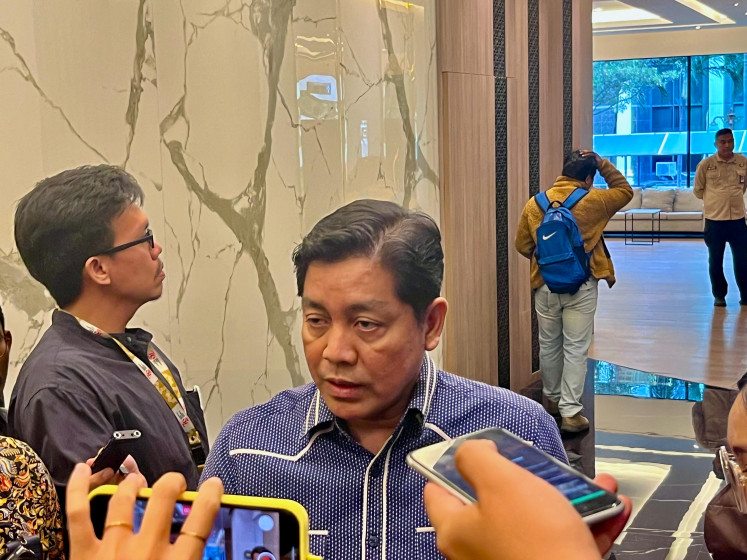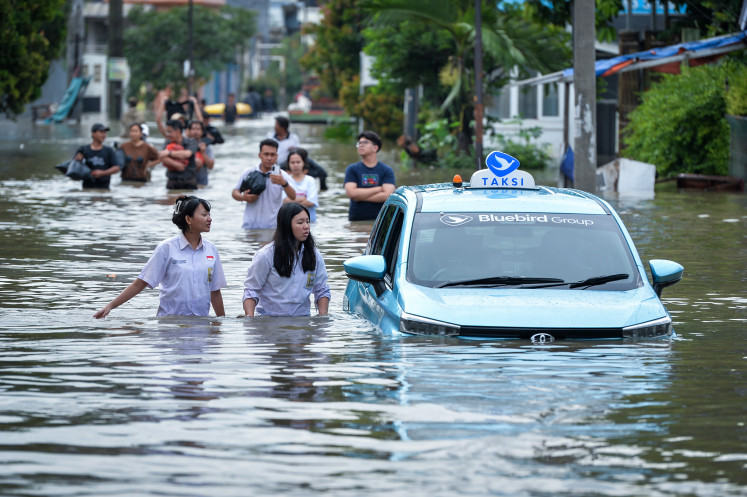Popular Reads
Top Results
Can't find what you're looking for?
View all search resultsPopular Reads
Top Results
Can't find what you're looking for?
View all search resultsNational competency: Poor quality of medical graduates
Since 2007, Indonesia has implemented national competency tests for graduating medical students (UKDI and UKMPPD)
Change text size
Gift Premium Articles
to Anyone
S
ince 2007, Indonesia has implemented national competency tests for graduating medical students (UKDI and UKMPPD).
Despite a passing grade of only 66, about a third of graduating medical students failed to pass the computer-based test (CBT) on their first take.
This year, 11 universities were identified as being of very poor quality, where over 50 percent of their students failed the test. Failed students were able to keep retaking the test to meet the passing grade. However, less than half would succeed on their first retake.
The low passing grade and the low quality of education would naturally result in substandard quality of primary care for the public. They may contribute to the malpractice lawsuits — where about 35 percent are primary care issues. Moreover, the cost and time lost due to retaking the exam often leads to unlicensed practices in small clinics.
Tackling the issue of physician quality requires us to look further upstream and evaluate the two most important aspects of medical education: quality of admitted students and quality of the teaching-learning processes.
As we look closely to the universities who perform poorly, we would find disproportionate amount of students admitted without objective comparable metrics. Some admissions only use high school grades whose standards vary from school to school. Others were admitted based on connection and donations.
Further, the governmental financial support for medical education has not been keeping up with the skyrocketing cost for medical education. This imbalance reduces the relative opportunities made available for quality students coming from lower socioeconomic status.
As a result of these poor admission standards and lack of financial support, we have lower quality of students coming through the medical education pipeline.
Down the process stream following admission, we see the poor quality of teaching and learning. For public universities, zero growth policy prevents hiring new faculty members as government employees, while many universities do not have the fiscal capacity to create contract-instructor job posts with attractive salaries and benefits. These create shortage of instructors, which trickles down to quality issues as universities now are unable to keep up with the heavily specialized field of medical education.
For decades, private and newly established public universities have been relying on existing public universities to “lend” their resources by hiring their faculty members part-time. The shortage in public universities would have immediate impact to private universities — and even more so in geographically remote areas. Further, limited financial support from the government to private universities prevents them from getting the adequate strategic resources and equipment to ensure high-quality teaching and learning.
The government needs to get their hands dirty and take action to solve this issue — in compliance with the 2014 Health Law.
First, understanding the admission issue will require a centralized, objective, and comparable metric. The easiest would be fixing the cheating and fraud problems in the current standardized high school national exams. This would produce comparable metrics between one high school and another.
Other efforts to produce metrics may involve using certain existing university entrance tests in which we already have the infrastructure, such as expanding the public university entrance exam (SBMPTN) to include medical schools.
Alternatively, we can develop a specific test for medical school entry, but this can be very costly—such as Medical College Admission Test (MCAT) in the Unites States, BMAT in the UK, TMS in Germany and GAMSAT in Australia.
In many developed countries, it has been well studied that students from a lower socioeconomic status perform less satisfactory on all these objective metrics. This is a result of cumulative exposure of worse health conditions, poor healthcare access, low quality of early education, and meager resources to seek help — intervention is needed to break this intergenerational cycle. Government agencies should provide educational support to bridge this gap, while providing incentives for medical schools to admit those of disadvantaged backgrounds, such as provide scholarships.
It is in the government’s best interest to invest in medical education for students from remote areas and of low-socioeconomic status, as these are the people who would be more likely to contribute back to their local community — in line with the government’s goal in improving the distribution of healthcare workers.
Handling the shortage of medical instructors is somewhat more complicated. Pouring more money would help in the long run, but would not fix the short-term shortage we have at hand.
Currently established instructors are disproportionately located in big cities, where they have families, and a stable career for themselves and their spouse.
Prior to relocation, the instructors would need to consider these other factors outside of money: accessibility, safety, security, and job opportunities for their spouse. Many of these factors are not easily changeable in the short run.
Instead, we should leverage technology and e-learning as a method to improve quality while slowly building capacity for the local universities to develop. We can remotely teach students everywhere using quality instructional videos (e-lectures); a public good from notable universities. This is an efficient use of resources as it would only require an upfront investment. The community could assist in quality control, and dissemination is easy and inexpensive. Bosnia implemented similar program in 2002, which resulted in clear gains.
Local instructors would build on the videos by providing a local context to language adaptation and patient interaction. This would deliver high-quality instructional materials while building capacity and bridging the cultural gap for uptake.
These strategies would substantially raise the quality of the medical schools in underserved areas, improve the quality of the medical graduates, deliver better quality health services, and in turn, reduce the health disparity in Indonesia.
___________________________________
Nanda Lucky Prasetya is a physician, who graduated from the University of Indonesia and a research associate at Suharlim Foundation working on medical education improvement strategies. Christian Suharlim is a former employee of the Health Ministry and a researcher at the Harvard School of Public Health, conducting economic evaluation of health interventions.










